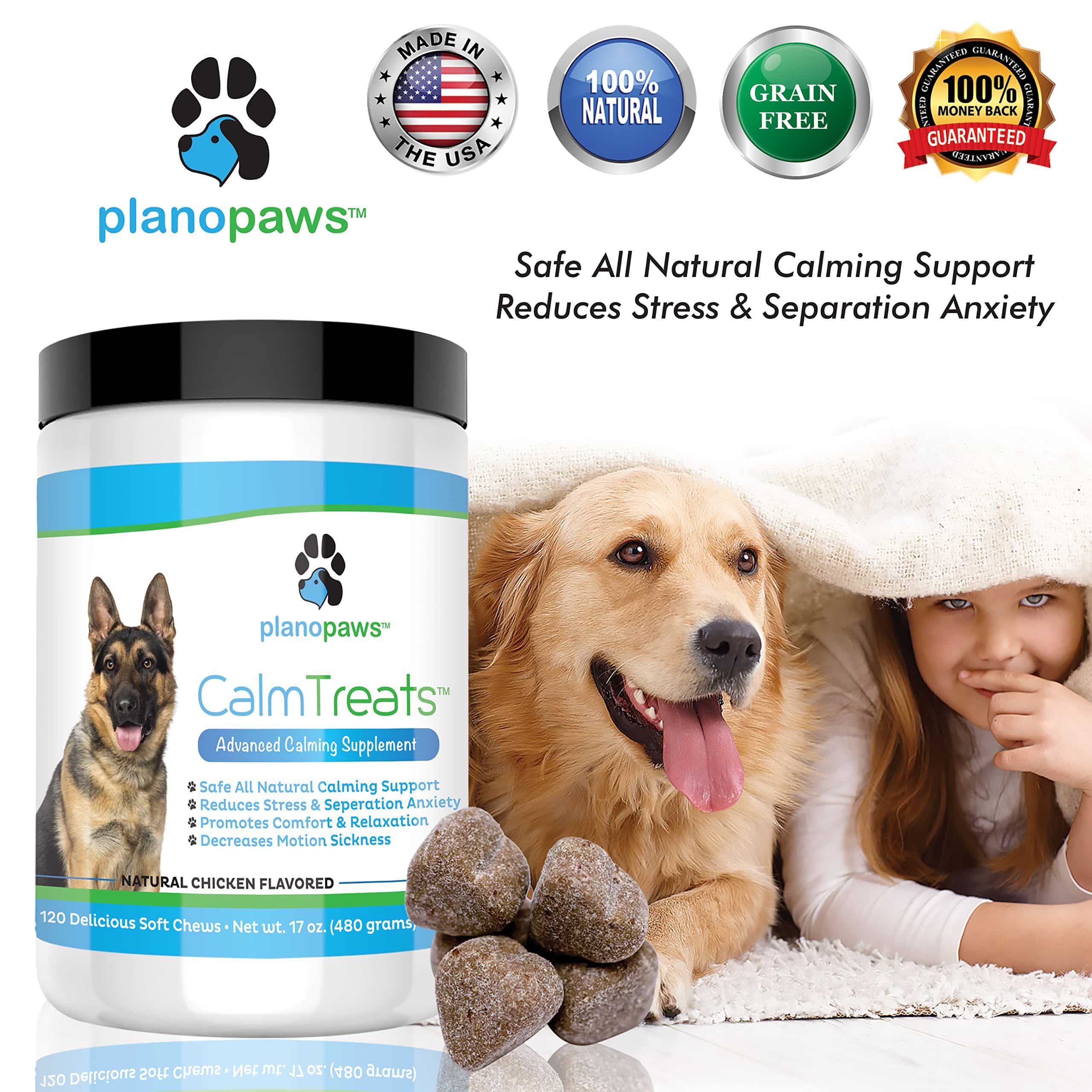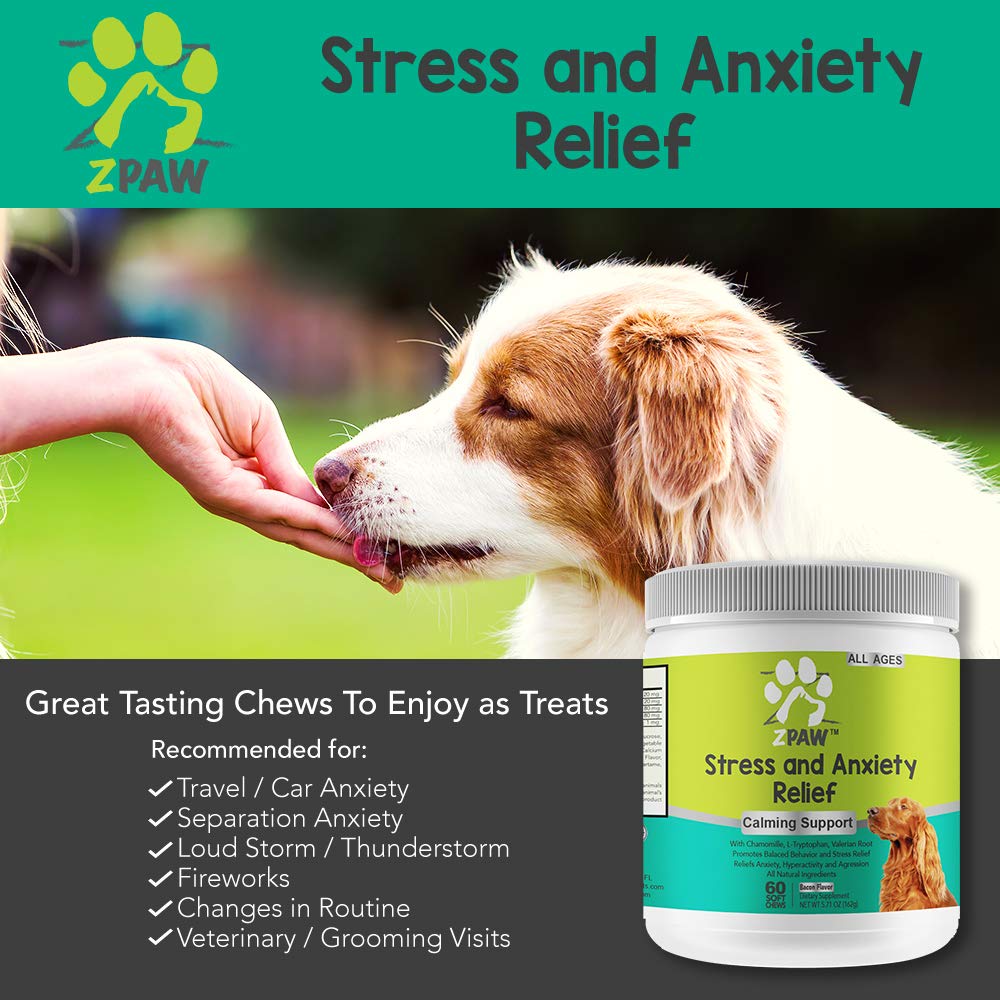Crate Training: Dont Lose Hope
If youre consistent and empathetic with your application of the above solutions, you should have your dogs anxiety under control in no time.
Theres nothing worse than a sad dog, but the strategies shown here will help you teach your pet how to stay calm and confident, no matter what happens.
Did you know that your dog sleeping close to you could be a sign of separation anxiety? See our article for more!
Featured image credit: Tomasz_Mikolajczyk, Pixabay
Contents
If The Problem Is More Serious
A dog with severe anxiety won’t be distracted by even the tastiest treats. You’ll need to slowly get them used to your absence.
They may start to get nervous when they see signs you’re about to leave, like putting on your shoes or picking up your keys. So do those things, but then don’t leave. Put on your shoes and then sit down at the table. Pick up your keys and watch TV. Do this over and over many times a day.
When your dog starts to feel less anxious about that, you can slowly start to disappear. First just go on the other side of the door. Ask your dog to stay, then close an inside door between you. Reappear after a few seconds. Slowly increase the amount of time you’re gone. Put on your shoes and pick up your keys. Ask your dog to stay while you go into another room.
As they get more used to the “stay game,” increase the amount of time you’re gone. Then use an outside door, but not the same one you go out every day. Make sure your dog is relaxed before you leave.
Only you can tell if your dog is ready to be left alone for longer periods. Don’t rush things. Give them a stuffed treat when you’ve built up to 10 seconds or so apart. Always act calm when you leave and when you return.
Gradually build up the time until you can leave the house for a few minutes. Then stay away for longer and longer periods.
Comfort Place And Attention
Your dog needs to have a place to go when you leave where she feels safe and secure. Start teaching her a go to your bed command and praise and reward her when she does. Give her lots of attention and love when she is lying in her bed. In fact, you should make this the only place where she gets this kind of attention . She will soon find it very reassuring to be in her bed.
Resist giving your dog attention whenever she demands it. Ignore her when she comes to you and nudges your hand to be petted. Give her attention on your terms, not hers.
Recommended Reading: How Does Anxiety Medication Work
Help Your Pet Socialize With Other Dogs
Sometimes, dog separation anxiety solutions are as simple as going to the dog park.
How often does your pet get the chance to socialize with other dogs? If theyre not with you all day, are they alone, or do they get some time to be around other dogs?
Even if youre able to set aside a lot of time to be with your pup, she still needs to learn how to be around other dogs. This kind of stimulation will help reduce boredom and problem behaviors like chewing and digging.
Walk Your Dog Before Leaving

Of course, we cant forget about how important exercise is for both the physical and mental health of dogs. You should be making sure your dog gets regular exercise no matter what, but it can also double as a way to reduce anxiety.
Taking your dog for a walk in the morning before you leave can help to wear them out and burn off some of that nervous energy. Theyre more likely to nap and be in a better state of mind after theyve gotten some activity in their day!
Don’t Miss: How I Get Rid Of Anxiety
Living And Managing Fear And Anxiety In Dogs
If your dog is taking medication, your vet will want to run occasional blood tests to make sure your dogs body is able to process and eliminate the medication properly.
If behavior modification doesnt work long-term, your vet may want to modify the approach. if left untreated, these disorders are likely to progress.
You will need to help your dog with behavior modification exercises and teach him to relax in a variety of environmental settings. encourage calm when your dog seems distressed. distract him and redirect his attention, following the plan that your veterinarian has outlined.
Fearful or anxious dogs may need to live in a protected environment with as few social stressors as possible. They dont do well in dog shows, dog parks, or large crowds.
and remember that not all dogs are calmer when they are in a cage some dogs panic when caged and will hurt themselves if they are forced to be confined. Absolutely avoid punishment for behavior related to fear, phobia, or anxiety.
Contact your veterinarian for a referral for professional help with behavior modification for your dog.
Which Dog Breeds Have The Worst Separation Anxiety
Certain dog breeds suffer from worse separation anxiety than others. The dog breeds with the worst separation anxiety include: Labrador retriever, Border Collie, Jack Russell Terrier, German Shepherd, Australian Shepherd, and Toy Poodle. While these are the most common dog breeds that suffer from separation anxiety, any dog breed can experience it.
You May Like: How Long Does Anxiety Disorder Last
What Scents Are Calming To Dogs
Because barking and excessive activity are typically signs of stress in shelter dogs not to mention being undesirable behaviors in the eyes of many adopters the study concluded that exposure to the odors of vanilla, coconut, valerian, and ginger has the potential to reduce stress in shelter dogs.
Dog Separation Anxiety Medications
Your vet can prescribe anxiety medications to help your pup calm down. Among the most common are:
-
Reconcile is a serotonin-reuptake inhibitor that raises levels of the neurotransmitter serotonin, a hormone that promotes your dogs feelings of well-being, in the brain.
-
Clomicalm is a tricyclic antidepressant medication that works, in part, by increasing brain levels of serotonin and a neurotransmitter called norepinephrine that affects your dogs stress levels.
You May Like: Is Depression A Anxiety Disorder
Train Them To Expect Your Departure And Arrival
Part of the reason that dogs grow so fearful after you leave is that they dont understand youll be back. To them, you may be gone forever every time you walk out the door.
To dispel them of this notion, establish a command that lets them know youre leaving, as well as a companion command that you use upon your return. This can be anything something as simple as Ill be right back! and Im home! works just fine.
Once they know that the first command is part of a pair of commands, theyll spend more time awaiting the second order than freaking out about the prospect that youre never coming home again.
How To Help A Dog With Anxiety
If your dog seems to worry when you’re heading out, destroys stuff when you leave the house, follows you from room to room when you’re home, goes berserk when you come back and seems to be eyeing you suspiciously even before you leaveyou may be dealing with a case of separation anxiety.
Dogs with separation anxiety exhibit distress and behavior problems when they’re left alone. Some of the most common ways they do this:
- Digging and scratching at doors or windows attempting to reunite with their owners
- Destructive chewing
- Urination and defecation
Recommended Reading: Can Smoking Weed Cause Anxiety
What Medications Help Dogs With Separation Anxiety
Dogs with severe forms of separation anxiety require meds. However, not all anti-anxiety medications are safe and efficient for dogs.
If looking at how to treat separation anxiety in dogs with medications, choose some of the following options:
- Alprazolam Anxiety type: Moderate to severe situational anxietyAlprazolam is given to dogs who face anxiety during thunderstorms. However, it might be used for other types of situational anxiety too. It is a mild sedative belonging to the benzodiazepine class. It is most impactful when given during early-stage anxiety and is available in tablets that can be given with or without food.
- Amitriptyline Anxiety Type: Separation anxiety and generalized anxiety Amitriptyline is a tricyclic antidepressant that works by increasing the neurotransmitters serotonin and norepinephrine in the brain, thus improving the dogs mood. It is available as tablets and can be given with or without food. The med is not suited for dogs with diabetes. Discontinuation requires tapering off.
- Buspirone Anxiety Type: Generalized anxietyBuspirone is the perfect medicine for dogs who become anxious in social situations. The med. It belongs to the azaperone class of anxiolytics and has a mild anti-anxiety effect that works by activating the serotonin receptors in the dogs brain. The downside of the drug is that it needs to be used consistently.
How To Cope While Your Dog Learns To Be Calm

It can take time for your dog to unlearn their panic response to your departures. To help you and your dog cope in the short term, consider the following interim solutions:
- Ask your veterinarian about drug therapy to reduce your dogs overall anxiety.
- If your dog enjoys the company of other dogs, take your dog to a well-run doggie daycare facility or kennel when you have to be away.
- Leave your dog with a friend, family member or neighbor when youre away.
- Take your dog to work with you, if possible.
Read Also: What Is The Best Drug For Anxiety
Low Key Goodbyes And Hellos
Creating lots of excitement during farewells and greetings can be a sign that youre about to leave for the day and be a trigger for separation anxiety. While it might take some willpower, practice showing your dog very little attention 15-30 minutes before leaving the house, as well as 15-30 minutes after you arrive home again, then greeting your dog quietly and calmly.
Similarly, if the sound of you picking up your keys, putting on shoes or starting your car is a signal that triggers your pet to think youre leaving, practice doing this so that your dog understands this is just a low-key activity, and not necessarily associated with you leaving the house.
How Do I Train My Dog To Be Scared Of Everything
Here are four things you should try: Make sure youre not encouraging the fear. If you see your scared dog in distress, your natural reaction may be to comfort them. Swaddle your pet. Products like the ThunderShirt can work well, says Petryk. Expose your pet to the fear in a controlled setting. Take your pet to the vet.
Don’t Miss: How Can You Get Over Anxiety
Consult With A Trainer Or Animal Behavioral Specialist
If a veterinarian has determined that your dog has no underlying health issues and may have separation anxiety, Basinger recommends consulting with a trainer “so that they could have a consultation that’s based on the specifics of their lifestyle, where they live, and their dog’s specific behavior.” There’s a lot of information out there, so rather than having to parse through all of it, she said, “Find a person that they trust to talk through it and come up with a plan. That way, they’re really getting the attention that they need for their particulars.”
While the pandemic may have contributed to a rise in separation anxiety, it doesn’t have to inhibit its treatment. “Many professionals are still offering services virtually during this time,” said Loyer, “and luckily separation anxiety is one behavior challenge that lends itself well to virtual coaching.”
There’s no legal requirement for dog trainers to be certified, but there are several highly reputable qualifications that can help you parse out the good from the bad. Listing all the different certifications here would be like alphabet soup, but as a rule of thumb, look for a trainer that is certified in canine behavior consulting or has a good track record with testimonials from clients.
Start Short The Golden Rule
If you bring home a dog on a Sunday evening and then spend most of the following day away, expect to come home to a very distressed pooch.
In order to effectively train a dog to be comfortable left alone, it is important to start with short intervals and work up from there.
It needn’t take forever, once you crack the one hour mark then double up to two, then four, six and eight .
But don’t attempt that over a week plan it ideally for at least a couple of months and expect mistakes.
The objective with this technique is to help your dog associate being left alone not as a worry, but instead as an opportunity.
They have the house/area all to themselves to play with their toys, doze at leisure and ideally have sweet dreams of their owner’s return home.
Sounds idyllic? It is possible!
Recommended Reading: How To Treat A Teenager With Anxiety
When Should I Put Thundershirt On My Dog
It is recommended that the Thundershirt be put on at least 15-30 minutes prior to an event which causes your dog to be anxious. This helps keep your dog calm before the event and prevents your dog from getting into a severely anxious state which causes your dog, and you, a lot of unnecessary stress.
The Second Phase: Leaving Timing And Progression
On the contrary, these behaviors are classic signs of separation anxiety in dogs. Dogs with separation anxiety get upset when left alone for long periods. When a dog has separation anxiety, it may try to escape by any means necessary, including destroying furniture or hurting itself, particularly in the vicinity of exits like windows and doors.
When their owners are ready to leave, dogs suffering from separation anxiety may experience difficulty. The absence or departure of parents can cause anxiety or sadness in youngsters. Many children will do whatever they can to prevent their parents from leaving. When left alone, a dog suffering from separation anxiety may often begin barking and showing other signs of discomfort within minutes. When the guardian finally returns home, the dog acts like it has been years since he last saw him.
Educating your dog to enjoy or at least tolerate alone time is an effective remedy if your dog suffers from separation anxiety. To do this, the dog’s anxiety-inducing triggersin this example, being left aloneare gradually exposed to him in controlled settings.
Educating your dog to enjoy or at least tolerate alone time is an effective remedy if your dog suffers from separation anxiety. To do this, the dog’s anxiety-inducing triggersin this example, being left aloneare gradually exposed to him in controlled settings.
Also Check: What Is The Best Medication For Stress And Anxiety
How To Treat Anxiety In Senior Dogs
Everyone understands puppies have behavior problems and need to be taught the rules. But what about older dogs who understand the rules but become increasingly unable to follow them?
The root cause of behavioral issues in older dogs is often anxiety, which can increase as they enter their golden years. And just like puppies, senior dogs with anxiety simply need patience, understanding, and a few lifestyle adjustments to navigate their world in a happier and healthier way.
Here are the main ways anxiety manifests in senior dogs, and how you can help.
Leaving Your Dog To ‘crying It Out’ Means Suffering In Silence

Some dog training guides may suggest letting a dog ‘cry it out’. This technique, whilst practised widely, is neurologically damaging. Here’s why:
- Dogs and puppies left to cry it out will only learn that being alone is terrifying.
- Every time your dog becomes highly distressed, stress hormones occur in the body which can take days to reduce. This can cause negative, long-term effects on your dog’s body and mental state.
- Some will sadly learn that calling for their owner to come back doesn’t work, so they learn to suffer in silence.
You May Like: Can Social Anxiety Be Diagnosed
How To Prevent Separation Anxiety In Dogs
Active, stimulated dogs may be less likely to develop separation anxiety. Keeping your pet active can help, and regular training sessions even for well-behaved dogs will reinforce positive behaviors. Routine exercise and training also provide structure. Sometimes, relaxing a training routine can actually lead to separation anxiety, which is another possible cause to consider when you speak with your veterinarian.
Discouraging certain behaviors can also help prevent separation anxiety from developing. Needy behaviors like scratching or excessively seeking attention may seem cute but could be a sign that your dog does not know how to comfort themselves. You can help them become more self-sufficient by gently discouraging or ignoring these behaviors.
What Causes Separation Anxiety Among Dogs
Various triggers can cause separation anxiety among canines. It usually builds up over time until it becomes a severe problem. If your dog suddenly exhibits signs of separation anxiety, you must consider these potential triggers:
- Sudden changes at home. Its possible that someone passed away, you moved to a new house, or the family had a drastic change in schedule. All of these will take its toll on your dog, which can result in separation anxiety.
- Being very social. If your dog is used to having people around all the time, it will experience separation anxiety when left alone for long.
- Being rehomed. Dogs that are rehomed are highly prone to separation anxiety. They always fear that their owners will abandon them again. Also, dogs that are left in shelters for too long are at risk of this problem.
Also Check: How Can I Help My Anxiety